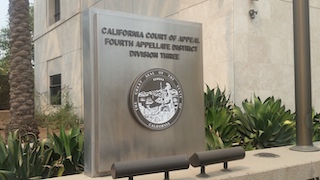The husband grabbed a piece of wood to go outside to confront Jenkins, who he found in his garage looking through the refrigerator there. The husband banged the wood on the ground and told Jenkins to leave.
Jenkins had a hammer in his backpack, which the husband could see was hanging out. Jenkins turned around, shoved the hammer into his backpack and walked out. The husband did not notice anything missing at first, but later realized a plastic container containing coins was missing.
As Jenkins was walking toward the street, the husband saw that the Nissan Sentra driver’s side window was shattered and there were marks where the door was pried open. Both the glove compartment and center consoles were open and it appeared as if someone had rummaged through the car.
The husband called the police and described Jenkins. Police stopped him nearby and searched his backpack, finding a screwdriver, hammer and pliers. He also had a garage door remote control taken from inside the Nissan and two plastic containers with coins.
Jenkins was then taken to the police station, where he admitted using the hammer to break the car’s window and pry open the door. He said he was looking for money because he was hungry. He also admitted to trying to start the car and said he would have taken it if he could have started it. He then went into the garage and took some water and soda because he was dehydrated.
 Fourth Appellate District CA Court of Appeals Santa Ana
Fourth Appellate District CA Court of Appeals Santa Ana
The detective valued the Nissan at between $1,800 and $2,240, using the Kelly Blue Book.
In Orange County Superior Court, an information charged Jenkins with residential burglary (Penal Code §§ 459, 460(a)), vehicular burglary (Penal Code §§ 459, 460(b)), attempted unlawful taking of a vehicle (Penal Code § 664, Vehicle Code § 10851), and misdemeanor possession of burglary tools (Penal Code § 466). The information also alleged that a nonaccomplice was present in the house (Penal Code § 667.5(c)(21)), making the residential burglary charge a strike under California’s Three Strikes Law.
The information also alleged that Jenkins had previously been convicted of burglary and that the prior conviction was a strike.
Jenkins went to trial on the charges and before the detective testified as to the value of the Nissan, the judge held a 402 hearing regarding the detective’s anticipated testimony about the value of the car taken from the Kelly Blue Book. The judge, Cynthia M. Herrera, ruled the evidence admissible under Evidence Code § 1340, over Jenkins’ objection.
The jury found Jenkins guilty of all charges and found true the allegation that a nonaccomplice was present at the time of the burglary. The judge sentenced Jenkins to state prison for a total term of 13 years, consisting of eight years for the residential burglary (midterm of 4 years doubled for the prior strike) and a consecutive five years for the prior serious felony conviction. It also imposed a concurrent term of four years for the auto burglary (midterm of two years, doubled) and a two year concurrent term for attempted unlawful taking of a vehicle (midterm of 1 year, doubled) and stayed the sentence for possession of burglary tools.
Jenkins appealed to the Fourth Appellate District in Santa Ana the conviction for unlawful taking of a vehicle as a felony because it required that the People prove the vehicle was worth more than $950. People v. Jackson (2018) 26 Cal. App. 5th 371, 378. Jenkins argued that the Kelly Blue Book value was hearsay and thus inadmissible.
The prosecution did not disagree such a value was hearsay, but it argued that the value was admissible under the “published compilation exception to the hearsay rule” in Evidence Code § 1340. People v. Espinosa (2018) 23 Cal. App. 5th 317, 319.
The appellate court agreed with the prosecution that the Kelly Blue book information fell under Evidence Code § 1340, which permits introduction of “evidence of a statement, other than opinion, contained in a tabulation, list, directory, register, or other published compilation that is not made inadmissible by the hearsay rule if the compilation is generally used and relied upon as accurate in the course of business as defined in Section 1270.”
Five elements must be satisfied when a party seeks to introduce evidence under the published compilation exception: “(1) the proffered statement must be contained in a ‘compilation;’ (2) the compilation must be ‘published;’ (3) the compilation must be ‘generally used . . . in the course of a business;’ (4) it must be ‘generally . . . relied upon as accurate’ in the course of such business; and (5) the statement must be one of fact rather than opinion.” People v. Franzen (2012) 310 Cal. App. 4th 1193, 1206.
Here, the Fourth Appellate District found all five requirements were met, so it affirmed the trial court’s ruling on this issue and denied Jenkins appeal on that argument.
The citation for the Fourth Appellate District Court ruling discussed above is People v. Tyrus Romealus Jenkins (4th App. Dist., 2021) 70 Cal. App. 5th 175, 285 Cal. Rptr. 3d 225.
For more information about grand theft, please click on the following articles:
 Fourth Appellate District CA Court of Appeals Santa Ana
Fourth Appellate District CA Court of Appeals Santa Ana